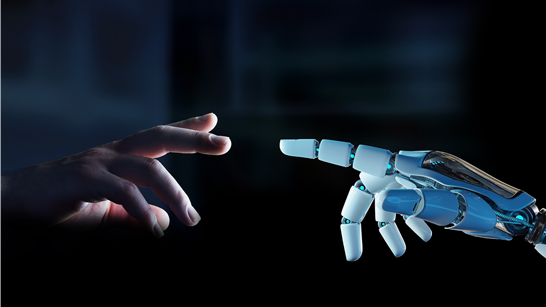Unleash the Potential: Artificial Intelligence in your Company
Artificial Intelligence - Revolution in Technology and Human Partners
Artificial intelligence, a wide-ranging field of research, aims to simulate and augment human intelligence through machines. Since it was coined in 1955, the term has experienced an enormous surge in development with cloud-based computing power.
Special Fields
The special Fields of AI
Some of the most important specialised areas of AI are presented below, which show how diverse and innovative the applications of this technology are. These areas are not strictly delineated and often overlap, such as computer vision and deep learning.
Machine learning (ML)
Development of systems that learn from data in order to recognise patterns and solve problems. This is used in personalised advertising or the recognition of patterns and anomalies. An ML model represents and reacts to data patterns as opposed to rigidly programmed algorithms.
Deep Learning (DL)
As part of machine learning, deep learning uses artificial neural networks to replicate the human brain. Typical applications include speech and facial recognition.
Natural language processing (NLP, NLU, NLG)
Used to analyse and generate natural language by machines. Tools for text translation or speech recognition services such as Siri or Alexa are already in use.
Robotics
Construction and control of machines that move and act autonomously in their environment. Autonomous vehicles and drones are typical examples of robotics.
Computer Vision
Focuses on how computers develop a deep understanding from digital images or videos to automate visual tasks normally performed by the human eye, such as face or object recognition and image optimisation.
Transformation
Is AI a Threat to Humans?
Artificial intelligence is often wrongly seen as a threat to humans. This view is fuelled by exaggerated portrayals of its capabilities. AI can indeed replace human work, often even more accurately and without fatigue, but AI always requires a humanly given task and its results must still be assessed by human judgement.
One example of the perceived threat of artificial intelligence is Microsoft Copilot. Copilot uses a large language model to recognise text intentions and follow instructions. Impressively, this works very well - provided it receives precise instructions (for example: «Divide weak AI into its areas.»). The content produced is nevertheless checked and revised by human intelligence in terms of accuracy, length and tonality. This is precisely the opportunity to utilise AI in a meaningful way. The actual creativity remains with humans, whereas the generation of the output (realisation) is done by a machine.
The world of work is indeed undergoing a transformation as a result of AI. Similar to the industrial revolution of the 18th century, in which repetitive tasks shifted to machines. Specifically, creative work and the assessment of results remain with humans, while routine tasks are increasingly being automated. Today, interaction with information systems in particular is undergoing change. The latest developments, which integrate into existing applications and utilise natural language, confirm this trend.
Possible uses
The possible uses of AI
Improvement of existing processes
AI acts as a building block to optimise processes or supplement existing solutions, often invisible to end users. Generative AI, such as ChatGPT or Copilot, enables direct interactions via user interfaces.
Chat with company data
Large language models interpret the intent behind search queries and control AI search engines. Results with deep links are summarised precisely, making information searches more efficient.
Language processing
Performs tasks such as text translation (DeepL, Google Translate), text analysis for meaning extraction or text/code generation from natural language.
Language models
Convert spoken language into written language and vice versa or recognise dialects and languages. They are central to AI assistants that can communicate multilingually, or in functions for transcribing and translating speech from videos or calls in MS Teams.
Image and video generation/modification
Generative models create or modify visual content based on descriptions, for example for profile images in customer reviews or for image modification through colour/shape changes.
Analytical tasks
Pattern and anomaly detection in data series and prediction of their development, e.g. telemetry data analysis of technical systems to prevent failures.
Data classification
Automated visual inspections by trained models that distinguish normal from abnormal features in images, e.g. building inspections by drones.
Key Value Extraction
Precise extraction of texts, key-value pairs, tables and structures from documents to convert unstructured data into usable information, for example when analysing customer reports or extracting information from invoices and forms.
The specialisms presented here - machine learning, deep learning, natural language processing, robotics and computer vision - are just a few examples of how AI technologies are tackling specific challenges in different industries. While these systems are each tailored to their own areas of application, the frequent overlap and integration of disciplines shows how interconnected and interdisciplinary the development of artificial intelligence is. In the future, we can expect these technologies to continue to advance and be used in new, innovative ways to complement and augment human capabilities.


